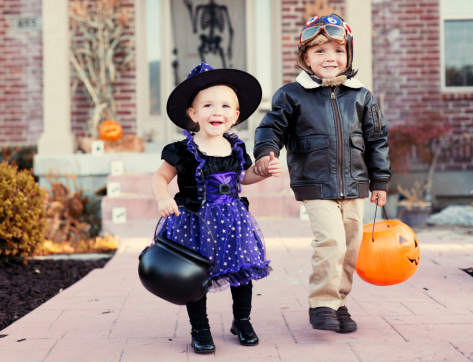 In Part I of this series titled “Getting Unmarried” (my story)
In Part I of this series titled “Getting Unmarried” (my story), I wrote about making the decision to get divorced as being the most important and most difficult step for me. I will tell you that after finally deciding to end my marriage, it was as if the weight of the world had been lifted from me. This didn’t necessarily make the rest of the process any easier, but it did change the focus of my efforts to getting from point A to point B.
Now that I had made the decision to end my 30-year marriage, my next step was to figure out how to do this. At this point I had not discussed any of this with my spouse, although we both realized our marriage was under tremendous stress once again. I didn’t have a clue where to begin. I had no prior experience myself, nor had my parents been divorced. I knew that listening to friends and family was not necessarily the best, as they naturally would find it difficult to be impartial. I knew I didn’t want a costly or high conflict divorce.
What I did want was
an open, respectful, type of process that considered both of our needs and the contributions we both made to our family during our 30-year marriage. I wanted to as much as possible be able to make decisions with my spouse about the outcomes rather than someone else making those decisions for us. I assumed that if I ran straight to an attorney, I might run the risk of the process getting out of control. At the time I didn’t personally know any family law attorneys. What I chose to do was to find out about the different alternative processes to divorce, choose the one I felt most suitable for my circumstances, discuss with my spouse with the hope we could agree to a process, and then find the attorneys who could help us achieve these goals.
While I knew, or I should say thought I knew, about the more traditional type of divorce process, this largely attorney driven (my opinion as a result of my divorce experience) method seemed too adversarial, too costly both financially and emotionally, and would not help me accomplish the goals I wanted to achieve. Although this process did not seem suitable for me, in some cases depending upon circumstances, it may be the best and sometimes the only alternative available. I would encourage anyone considering the traditional litigation type divorce process to thoroughly learn about
all the process alternatives before embarking down this path.
I had heard about mediation. From my research I learned that a mediator is an independent, neutral third party who attempts to help divorcing couples resolve their differences and come to mutual agreements. The mediator may or may not be an attorney. Regardless, the mediator is not able to advocate for either spouse, provide legal advice, nor draft any legal documents for filing with the court. Each spouse may have his or her own attorney during the mediation process. The attorneys, if any, may or may not participate in mediation sessions depending upon the couple’s desires. At the conclusion of mediation, the mediator typically drafts a memorandum of understanding outlining any agreements reached. An attorney would be hired by one of the spouses to draft the necessary paperwork, using the mediator’s memorandum of understanding as a foundation for agreements, and submit the paperwork to the court.
The drafting attorney is only able to represent one spouse. The other spouse may find another attorney to review the draft decree on behalf of their interests. I always recommend that each spouse has their own attorney to make sure that each has an opportunity to ask about the law and that each fully understands the implications of their agreement. There is nothing that requires the couple to complete the mediation process, which can be withdrawn from by either spouse at any time.
While mediation seemed a better alternative to me than the traditional litigation type divorce, it still was not quite what I was looking for. I felt as though there had to be some other way. I started scouring the web for more information on how to get divorced or “unmarried.” Oh sure, the do it yourself options are often mentioned, but our circumstances were too complicated—long-term 30-year marriage, property, etc.—for a do-it-yourself kind of approach. A do-it-yourself divorce might possibly be used in a short-term marriage when there are no children and little property. Furthermore, I am a believer that you get what you pay for and a do-it-yourself divorce never crossed my mind given our circumstances.
In my next post I will continue with how to get divorced by sharing with you what I learned about something I had never heard of before, a
collaborative divorce. You owe it to yourself to learn about this alternative process so please stay tuned for the next session of “Getting Unmarried.” What is a collaborative divorce?
Read the continued series here.
 Often when we decide to do something of significance, like go on vacation, obtain a college degree, search for a new job, or save for a future purchase we develop a plan. If you are serious about the task set before you, you will develop a written plan to keep you on track and measure your progress.
Getting unmarried, as I now refer to divorce, should be no different. In fact, if you choose to use a collaborative divorce process, we utilize a written document called “Roadmap to Resolution.” I have found the use of this Roadmap extends beyond divorce planning. I use it as a general problem-solving model. The Roadmap has 6 essential steps.
Often when we decide to do something of significance, like go on vacation, obtain a college degree, search for a new job, or save for a future purchase we develop a plan. If you are serious about the task set before you, you will develop a written plan to keep you on track and measure your progress.
Getting unmarried, as I now refer to divorce, should be no different. In fact, if you choose to use a collaborative divorce process, we utilize a written document called “Roadmap to Resolution.” I have found the use of this Roadmap extends beyond divorce planning. I use it as a general problem-solving model. The Roadmap has 6 essential steps.




 Unmarried and have children? You may be interested to know that “Collaborative Divorce” is not just for divorce. Learn how the collaborative process can help you.
First, it may be relieving to know that you are not alone. There are some interesting recent statistics related to marriage and children. Nearly half of children in America are born outside of marriage. And, for women under 30, most children are born outside of marriage.
Whether you are married or not, if you separate from the other parent, you’ll need to figure out custody, parenting time and financial support issues related to your children. These are legal issues that should be finalized in a court order, either by agreement reached in the collaborative process or mediation, or by a court decision after a trial.
There is a great online resource related to unmarried parents (useful to both unmarried mothers and unmarried fathers),
Unmarried and have children? You may be interested to know that “Collaborative Divorce” is not just for divorce. Learn how the collaborative process can help you.
First, it may be relieving to know that you are not alone. There are some interesting recent statistics related to marriage and children. Nearly half of children in America are born outside of marriage. And, for women under 30, most children are born outside of marriage.
Whether you are married or not, if you separate from the other parent, you’ll need to figure out custody, parenting time and financial support issues related to your children. These are legal issues that should be finalized in a court order, either by agreement reached in the collaborative process or mediation, or by a court decision after a trial.
There is a great online resource related to unmarried parents (useful to both unmarried mothers and unmarried fathers), 
